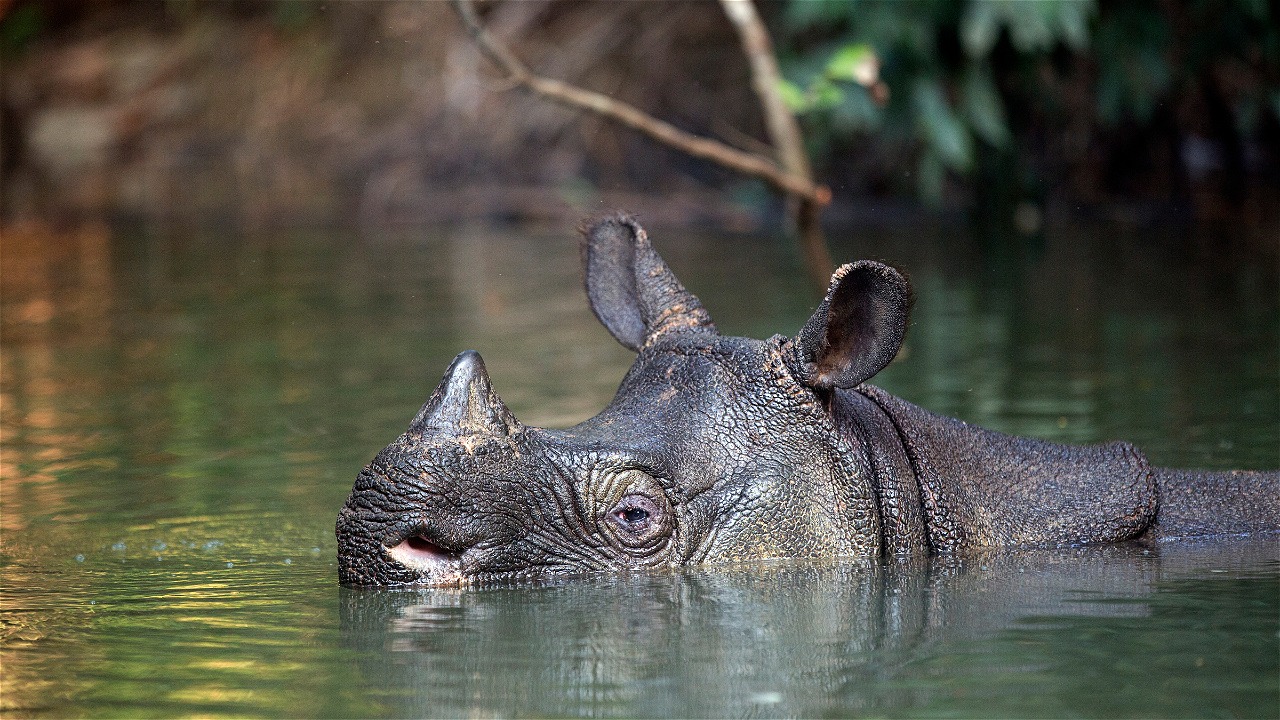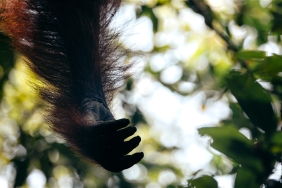COMPETITION FOR SPACE THREATENS THE LIVES OF JAVAN RHINOS
By: Nur Arinta
Unfortunately, Ujung Kulon National Park is not only a habitat for Javan Rhinos, but also for other large mammals such as bulls. Some field findings from several researchers show indications of competition between Javan Rhinos and banteng. Quoted from the book Indonesian Rhino Conservation Techniques by Prof. Hadi Alikodra et al, 2013, it is mentioned that competition is seen from the many types of the same food plants, the dominance of certain plants that are not favorable for the availability of Javan Rhino food plants, and overlapping paths between the two.
Prof. Hadi Ali Kodra said that banteng in Ujung Kulon National Park are much more likely to stay and forage in the forest. There are even groups of banteng that live in the forest and never visit the pasture. Such conditions certainly affect the life of the rhino population, which is characterized by one cula. Inevitably, Javan rhinos and bantengs will interact and consume the same resources available, thus affecting the regeneration process of the forage plants.
Another thing that affects the threat of the Javan Rhino in its competition in nature with banteng is the difference in reproductive rates. The reproductive rate of Javan Rhinos is very slow compared to other large mammals. Based on data quoted from mongabay.com, the interval in one birth period for female rhinos takes about 4 - 5 years, after a pregnancy period of 15 to 16 months. The solitary nature of rhinos also makes this species spend more time alone. This has led to the rhino's low potential to breed in a fast period of time. To date, the Javan Rhino population in TNUK is recorded at 68 individuals.
Unlike the Javan Rhino, the Banteng has a higher reproductive rate. Data in the book Indonesian Rhino Conservation Techniques shows that the banteng population in TNUK has increased significantly. The group-living nature of banteng also encourages the high reproduction rate of this animal. Quoting from the same book, banteng are actually grazers rather than browsers. However, Professor Ali Kondra said that the banteng living in TNUK are more browser in nature. This is supported by the fact that many banteng groups only forage in the forest, not in pastures for grazing.
In addition to ecological competition with banteng, the Javan Rhino population in TNUK also faces other threats. TNUK's proximity to an active volcano, Anak Gunung Krakatau, poses the threat of natural disasters wiping out the remaining Javan Rhino population. The active volcano could erupt at any time and cause a tsunami. If a tsunami occurs, it is not impossible that the huge sea waves can take away all the Javan Rhino population in TNUK.
The Javan Rhino population is seen in terms of its slow reproductive ability and the threat of natural disasters, such as tsunamis that can occur at any time. This is reinforced by a study published by a prestigious world conservation journal, Conservation Letter. The study states that part of the Javan Rhino population in Ujung Kulon National Park (TNUK) is within the range of the Krakatau Volcano and close to the Sunda Basin, a convergent area of tectonic plates that has the potential to cause earthquakes, and can trigger tsunamis. In this study, the researchers proved that the 2013 population of 62 individuals is a dense population in one habitat. The study also projected that a 10-meter tsunami, or about 33 feet in the next 100 years, could threaten 80 percent of the national park area, even though this area is the habitat with the highest population density of Javan Rhinos.
Therefore, appropriate efforts must be made immediately to prevent the extinction of Javan Rhinos from Indonesia and the world. One of the efforts that can be made is to build a new habitat (second habitat) after TNUK for Javan Rhinos. The idea of a new habitat has been around since 1989 which was then outlined in the Strategy and Conservation Action Plan (SRAK) for Javan Rhinos through the Minister of Forestry Regulation (Permenhut) Number P.43/Menhut-II/2007. However, the realization of a new habitat for the Javan Rhino is still under discussion until now.




